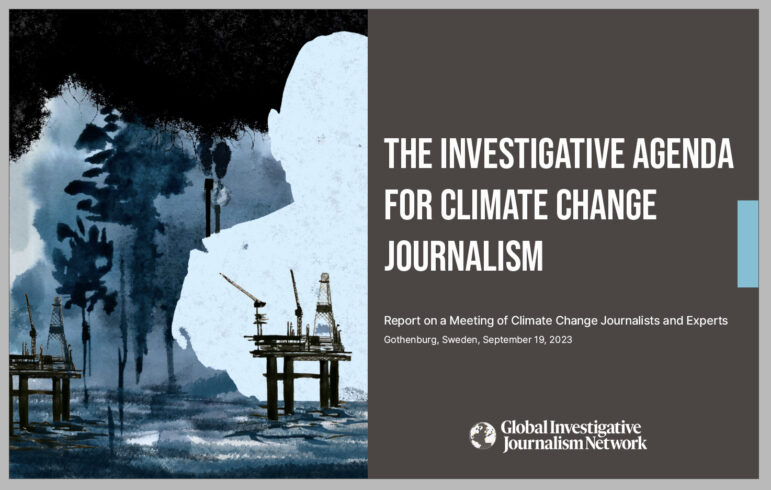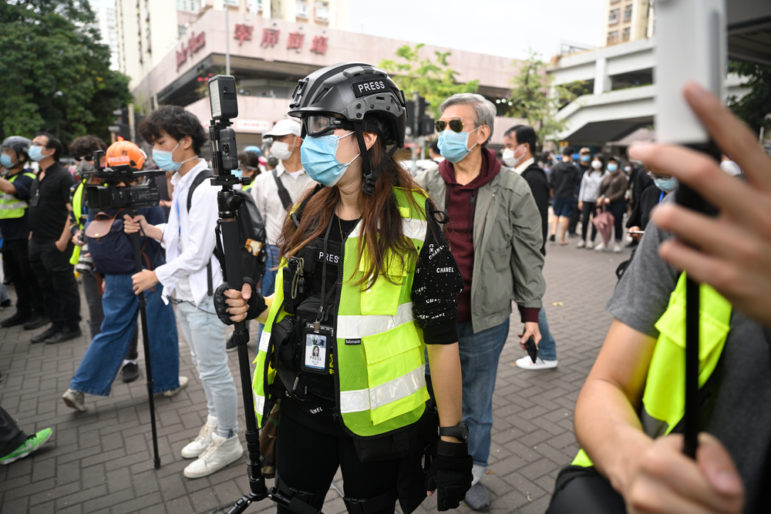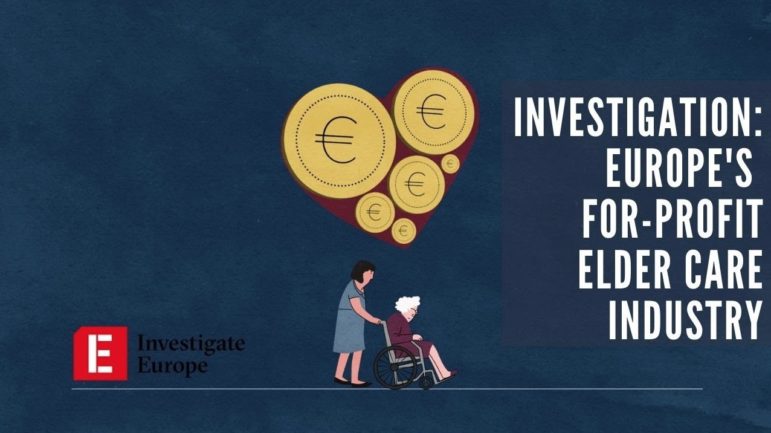

Planning for 2021: Strategies for Steering Your Organization Through the Year
Read this article in
As the COVID-19 pandemic enters its second year, journalists around the world are wondering when they can get away from their screens and back into the field. When will they be able travel again? How soon can they physically meet with sources, and even with each other? When will the global vaccine rollouts become effective? How should nonprofit newsrooms approach donors around the world?
These were the urgent questions discussed in a January 21 workshop for GIJN member organizations. The virtual meeting drew 35 nonprofit news leaders from 21 countries, who listened to experts in public health, event planning, and fundraising on how to best plan for another year of uncertainty.
The panel featured Dr. Richard Dawood, co-founder of London’s Fleet Street Clinic; Adam Martin, meetings manager for the Online News Association (ONA); and fundraising consultant Bridget Gallagher, founder of the Gallagher Group.
The good news from the three speakers is that the key to planning for many of these challenges involves skills that journalists have in abundance: great storytelling and relationship-building, data gathering and analysis, and being tenacious.
“It’s our toughest time, but it’s also our finest time,” said David E. Kaplan, executive director of GIJN, who moderated the workshop. “The quality nonprofit watchdog media is doing incredible work — you are persevering and creating a model of journalism that really didn’t exist 10 years ago, and doing it in some of the toughest places in the world.”
The workshop participants heard that in-person international conferences are unlikely during 2021.
The author of “Travellers’ Health: How To Stay Healthy Abroad,” Dawood is an expert in travel medicine, who advises on medical risks and crisis management for international media organizations, musicians, and industry leaders.
Dawood says it will be at least another year for vaccine coverage to reach a point that will allow in-person cross-border gatherings. He said conferences held at the national level will likely happen first. But he warned that journalism organizations need to be flexible and plan for last-minute rule changes or lockdowns from local authorities — especially if new strains of the virus continue to spread.
He expects the current restrictions on any international travel to remain in place until at least late 2021, and that some coronavirus-related restrictions are likely to continue for years. A “vaccine passport” — a travel document to distinguish those with immunity from those without — could become a common requirement for international travel.
“There will be restrictions on travel for a very long time to come, but hopefully they will be restrictions we can live with,” he said, noting existing requirements for yellow fever certificates for travel into parts of Africa, and meningitis vaccine certificates for travel to Saudi Arabia.
Meanwhile, Pulitzer Prize winning reporter David Cay Johnston — a participant of the webinar — noted that some airlines are advising their frequent flyer customers to plan for restricted international travel until August or September 2022. That, Johnston, suggested, meant that one could consider planning for international conferences in late 2022.
Travel Tips from Dr. Dawood
- Monitor the data from “sentinel countries.” The first clues for the real-world effectiveness of vaccines — like distribution, case counts, and transmission rates — may come from countries like Israel with small populations, early rollout campaigns, and highly developed health systems. “We can get clues like: how does [vaccination coverage] affect spread?” explains Dawood. “Despite good early vaccine coverage, Israel continues to have a high level of transmission. We’ll be able to see very quickly what the benefit is, for instance, in terms of the effectiveness of either a single dose of the vaccine, or two doses.”
- Watch for data on countries that begin vaccinations on less vulnerable population groups. Health authorities in the United Kingdom plan to begin vaccinating lower risk populations by spring or early summer this year.
- Be aware that even high case-rate countries will continue to worry about imported infections. Dawood says around 160 countries already require travelers to show a negative coronavirus test prior to international travel; many of these may also impose restrictions like quarantine on arrival.
- Watch for new forms of evidence for permission to travel. In addition to negative coronavirus tests and vaccination certificates, Dawood says creative forms of evidence for COVID-19 immunity are emerging in government policies, such as a recent decision by US authorities to accept a physician’s letter stating that the traveler recently recovered from infection.
- New variants have compounded concerns about travel, and could deepen travel restrictions for a while. “New variant strains have added extra layers of complexity,” he says. “People are worrying about whether existing tests will detect new variant strains, and whether the vaccines fully protect against them. We will continue to see restrictions to travel as long as there is uncertainty, and until vaccines are widely accessible globally, with a relatively high percentage of people protected.”
- Keep informed with a mix of sources. “It’s a mix of quality sources; it’s keeping your ear to the ground for intel,” he said. “The medical journals are great; and journalists are a part of that intelligence gathering network. I used to turn to the CDC [the Centers for Disease Control and Prevention] as my number one source, and hopefully the political change in the US will return the CDC to the position it once held as the front-runner.”
Conference Planning from ONA’s Martin
A certified meeting professional with broad experience in both the events and public transport industries, Martin focuses on the logistical planning and execution of the ONA’s big annual conferences. Martin advises:
- Check out ONA’s Decision Framework document for help assessing the possibility and design of safe in-person conferences in the COVID-19 period.
- Experiment with creative meeting forms. Martin says ONA is experimenting with a “staggered-hybrid” event for its 2021 conference, with a virtual component in June, and possibly a smaller in-person event in Philadelphia later in the year.
- Accept that “you don’t know what you don’t know.” Martin pointed out that a survey of 1,000 event organizers in June 2020 showed that 75% believed a return to normal events would occur by the first quarter of 2021. “That is obviously not the case,” he said. “There are so many questions. Is there a legal precedent for requiring vaccination proof to attend our events? Will there be attendees who claim discrimination?”
- Follow CDC guidance on gatherings, as well as local rules and restrictions.
- Set up a keyword-driven daily news feed — like Google news alerts — for updates on local travel restrictions, case counts, and maximum indoor occupancy numbers for potential conference venues.
- Regularly poll potential meeting attendees, and staff members, on their changing comfort levels, as meeting dates approach. Create a list of trusted resources to regularly monitor COVID-19 transmission, health system capacity, and vaccine rollout, such as the Institute for Health Metrics and Evaluation’s COVID-19 page.
Fundraising Tips from Gallagher
Bridget Gallagher provides fundraising strategy and counsel to clients worldwide, including major media, nonprofit newsrooms, think tanks and universities. Gallagher advises:
- Follow the trends from 2020, but don’t assume the same levels of support. “2020 actually was a pretty good year for nonprofit fundraising,” she said. “And there are lots of reasons to be optimistic. But I think 2021 will be [more difficult].”
- Strategize around the 2020 US trend in which individual giving to nonprofits increased — especially from small, grassroots donors. Gifts to nonprofits of less than $250 from individuals grew by 17% in 2020, and by around 6% from both mid-level and major donors; 66% of American foundations gave more money with fewer restrictions.
- Monitor early signs that donor organizations may be more cautious in 2021. “In 2020, it felt like we were jumping from one overwhelming uncertainty to the next,” Gallagher said. “Absent that persistence of crises, do people kind of check out?” Gallagher warned that stock markets and endowments may not fare as well this year as they did in 2020, due to prolonged impacts from the pandemic.
- Double-down on good storytelling. Detail how you overcame pandemic challenges, and clearly explain the difference you’re making for your constituents and communities.
- Be more conservative in your fundraising projects for 2021.
- Be in regular touch with both donors and prospects.
- Experiment with different platforms, channels, and tools to reach donors — from online events to new approaches with newsletters and social media campaigns.
- Focus on developing relationships in the context of common challenges donors also face, such as COVID-19 restrictions, racial justice crises, and technological changes.
- Ask people you know — whether professionally or socially — to make introductions to potential philanthropic partners. And don’t be discouraged.
- Emphasize to program officers and wealthy individuals that you only need 20 minutes of their time — with no extra time for travel or booking meeting rooms. They can just hop onto a Zoom call.
- For groups outside the US and Europe: “Don’t be shy to ask for help. One of the things that’s helpful about this moment is we all have a new appreciation for our own vulnerabilities and limitations, and donors know that asking for help is the only way any of us will get through this. Who are your stakeholders? Who wants to be helpful to you? Ask for connections; cultivate those mentor-type relationships; and be specific about what you’re looking for.”
Additional Planning Tools
- TechSoup: Fundraising Forecast
- The Communications Network: COVID-19 Triage Kit
- The Chronicle of Philanthropy: COVID-19 Special Report
- Institute for Nonprofit News: Major Gifts Primer
- GIJN: Fundraising Resources
Additional Reading
Medical, Digital, and Legal Safety Tips for Journalists Covering the Pandemic
Prospecting and Cultivation: A Fundraising Primer — Tips from Bridget Gallagher
How Reporters Can Flatten the Stress Curve While Covering the Pandemic
 Rowan Philp is a reporter for GIJN. Rowan was formerly chief reporter for South Africa’s Sunday Times. As a foreign correspondent, he has reported on news, politics, corruption, and conflict from more than two dozen countries around the world.
Rowan Philp is a reporter for GIJN. Rowan was formerly chief reporter for South Africa’s Sunday Times. As a foreign correspondent, he has reported on news, politics, corruption, and conflict from more than two dozen countries around the world.












